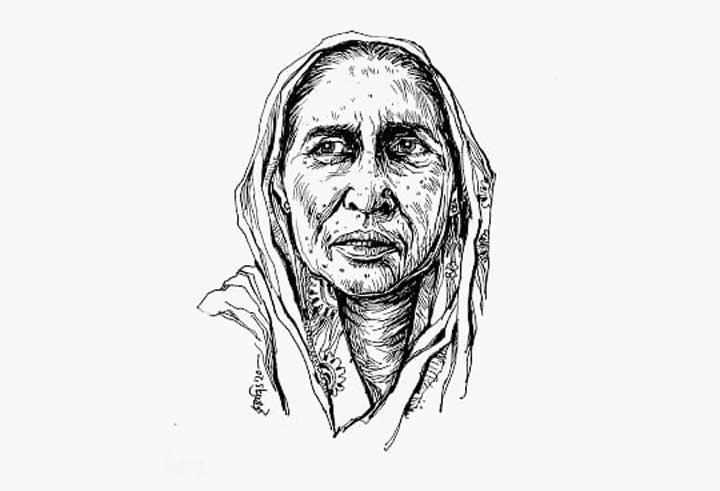Poets and writers have often used the mask as a metaphor for society’s hypocrisy, behind which remains concealed a sordid reality it tries not to reveal. Ever since Covid-19 overwhelmed the world and its human inhabitants, the mask has been touted as a safeguard against the virus.
Yet, artist and writer Krishnajit Sengupta, 46, of Behrampore town raises a crucial question about its efficacy in the brief introduction to his gallery of 42 pen-and-ink portraits of marginalised people rendered jobless by the extended lockdown: “Can the mask hide and mitigate the terror, uncertainty and hardships of those distressed people who lost their jobs overnight?”
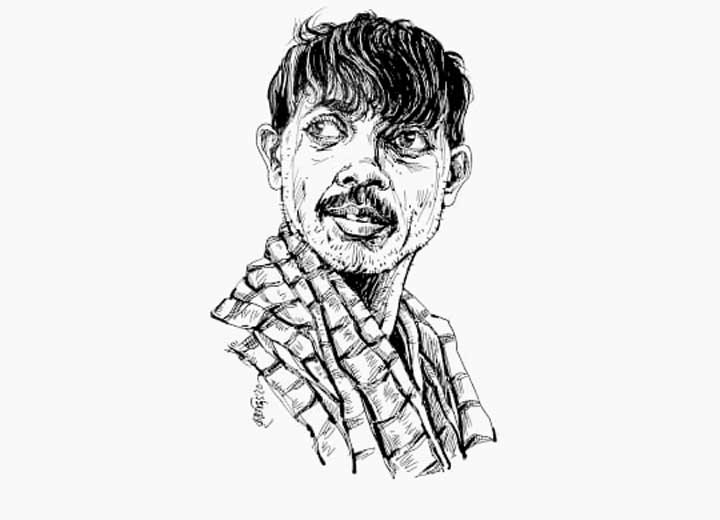
Babulal Ghosh Krishnajit Sengupta
Sengupta continues: “Wherever I look, the faces of these famished, hapless people stand revealed from behind the cover of their masks…. Earlier, I used to paint the portraits of mostly public figures. But never before have I taken to painting those portraits with such ardour as I have now.
“People don’t hang on their walls the pictures of masons, rickshaw and van drivers, barbers, carpenters, domestic help and hawkers. So it did not take much effort to keep them at arm’s length. But this time, these unemployed, starving people have entered my sketchbook, yes, without masks. For I know the mask cannot conceal their misery.”
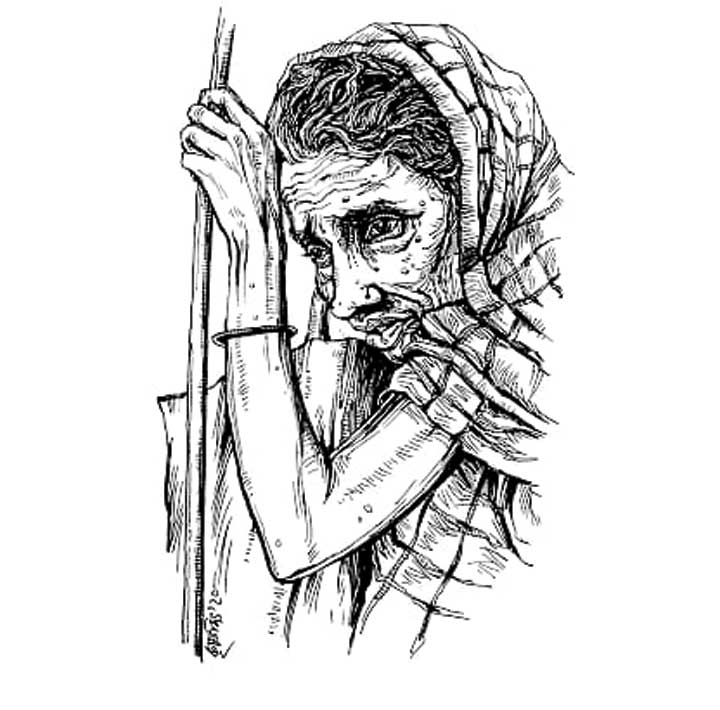
Hasi Rani Malakar Krishnajit Sengupta
In a symbolic gesture, Sengupta is unmasking an uncaring society in this book, titled Niranna, Karmaheen, which roughly translates to”Without food, without work”.
The widely circulated PDF file of the book is ready; it will be printed only after the lockdown ends. The publisher is Udbhas of Behrampore, Murshidabad.
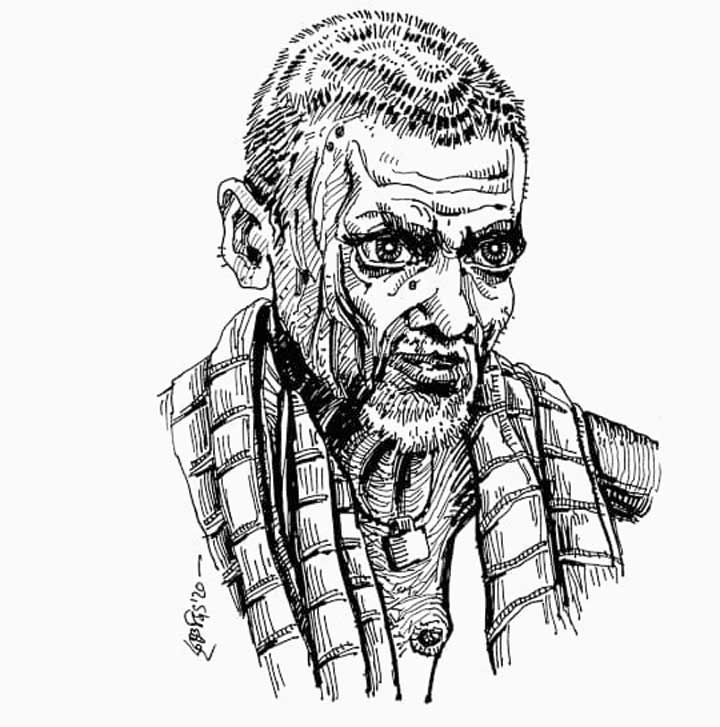
Rejaul Karim Krishnajit Sengupta
It begins with the cover — a collage of a drawing depicting the dilated eyes of a man, beneath which is a piece of buff cloth shaped like a mask that has, so to speak, deleted his identity. A procession of faces that have discarded masks — vestiges of false security — follows.
Sengupta portrays them not as abject creatures but as humans with dignity, luckless but not grovelling. He has made no attempt at idealising them, but has tweaked their features so that they cannot be identified.
We have all met them although we tend to ignore them. For the same reason, Sengupta has changed their names. These are true-to-life, yet moving, though not sentimental portraits. Each is a sharply etched individual from a different district of Bengal.
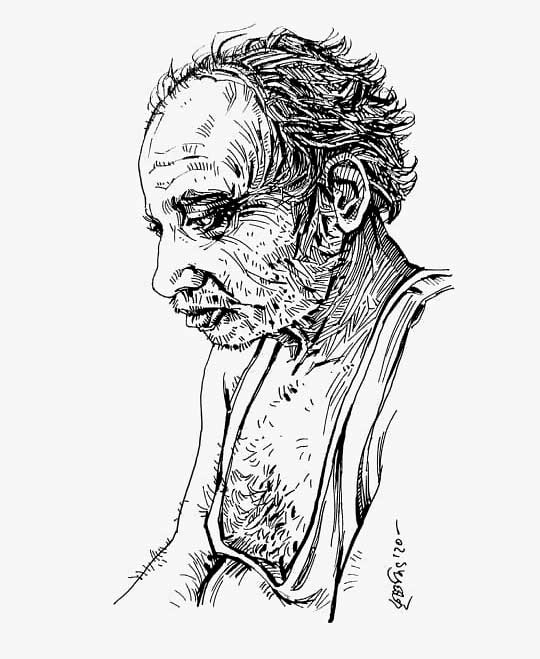
Narayan Chandra Pal Krishnajit Sengupta
The first portrait is of young Kasem Mandal — a gamchha tied round his head, he used to run a tea stall near the ghat, which has been closed since.
Young Babulal Ghosh, who did paint jobs, had left Bengal in search of work. Impossible to land jobs now. Fajal Ali once sold muri in local trains. Then all train services stopped. Nurul Biswas was a rickshaw-driver. Thereafter, he did paint jobs. But now who would want to whitewash their house?

Tarik Ali Krishnajit Sengupta
The most striking are the portraits of Manada Das, who once sold muri, her broad-lined and pitted face and unswerving gaze speaking of hidden reserves of courage; Hasi Rani Malakar, a frail, elderly beggar with only her lathi left as support as no one offers her alms any longer; ancient Binod Bagdi, bidi-maker with a drooping underlip; Bina Pal, who owned a tiny paan-cigarette shop and looks straight into your eyes; clear-eyed Parbati Mal, domestic help, who makes it a point to wear clean clothes (but no one is willing to hire her); Rejaul Karim, with eyes as large as saucers, who used to mend umbrellas; scruffy, balding clay artisan Narayan Chandra Pal; quilt-maker Dildar Hossain, who sports an impressive beard; Durga Rani Modak, another beggar, her eyes still alive; Khadeja Banu, a daily wage earner with a rough-hewn face; porter Tarik Ali who is old but still strong enough to carry loads. He is a picture of despair as he rests his furrowed head on one hand.
Sengupta displays his amazing skill and humanitarian concern through his portraiture. We are surprised even more when we learn that he is a self-taught artist who supports his family by designing book and magazine covers, writing books on his favourite artists like Jyotirindra Nath Tagore and Debabrata Mukhopadhyay, besides indulging his passion for Indian classical music. The pandemic has come as an eye-opener for Krishnajit Sengupta.

